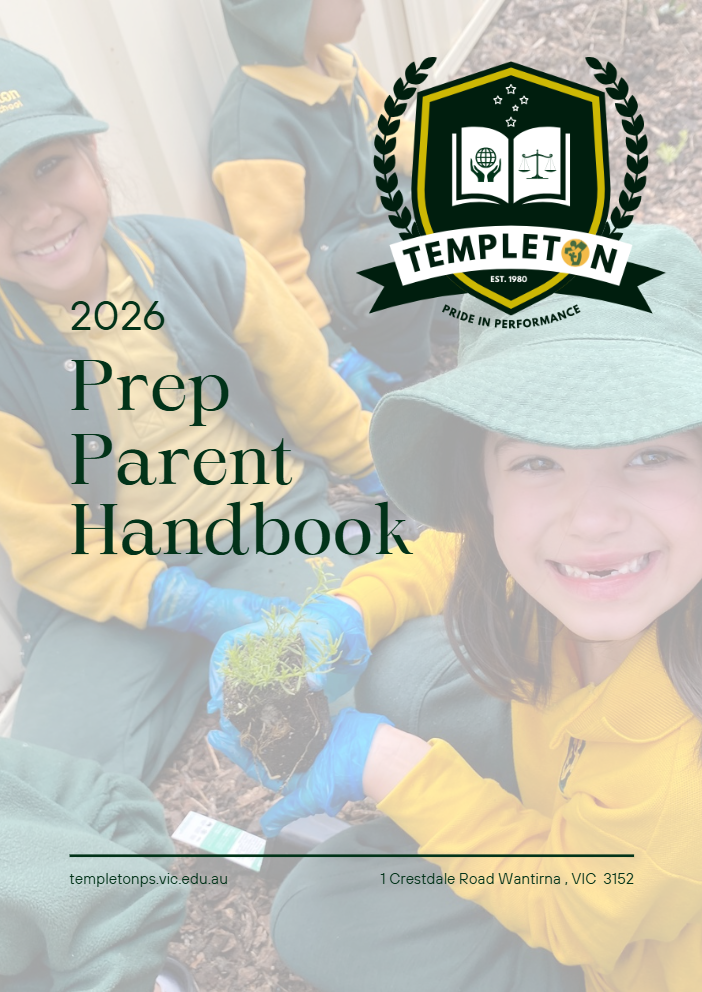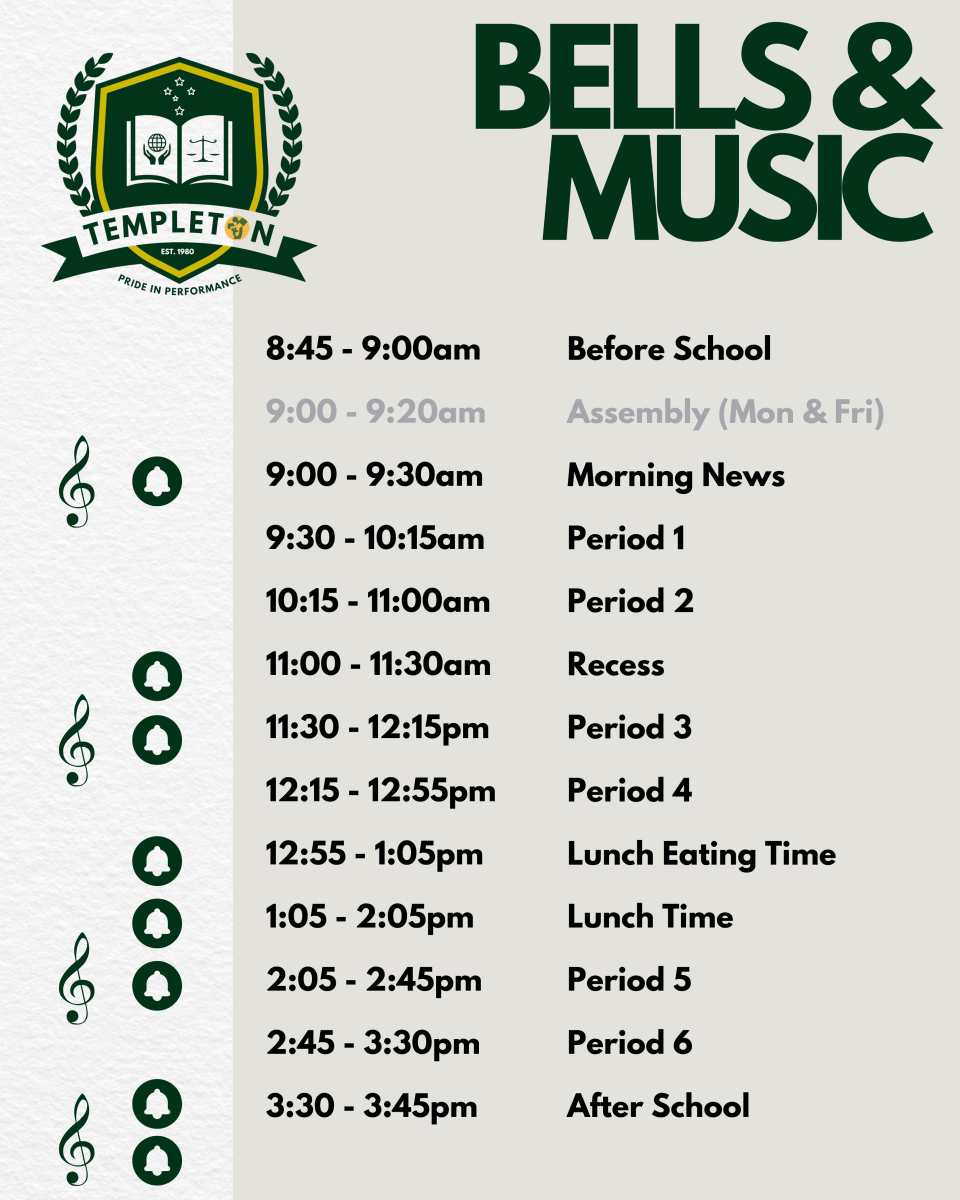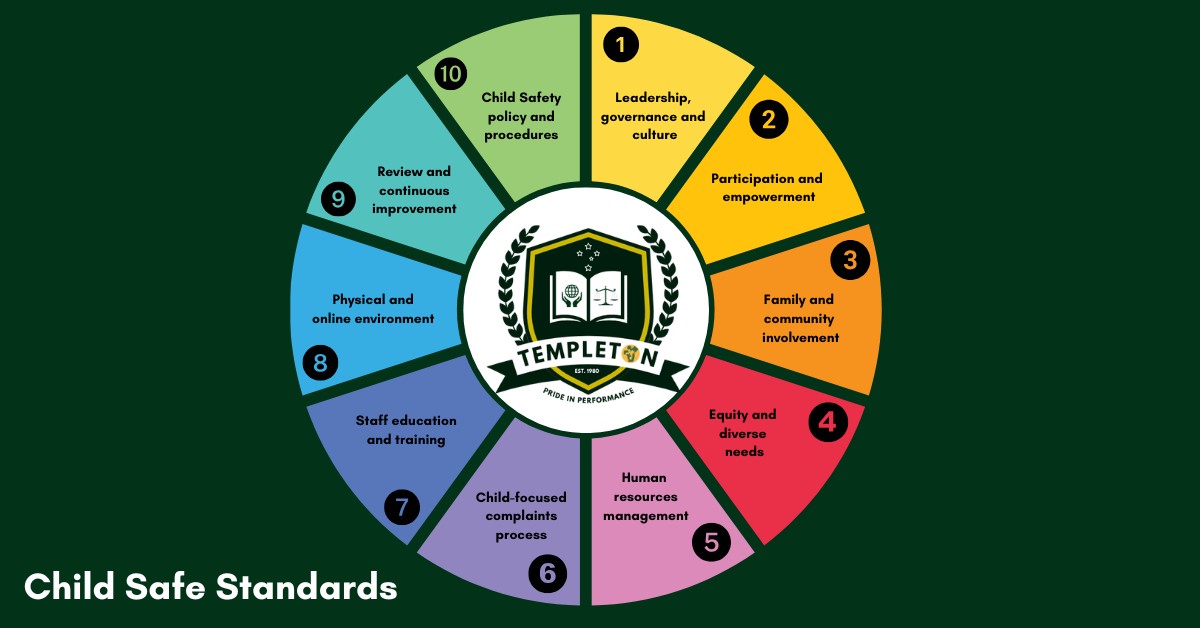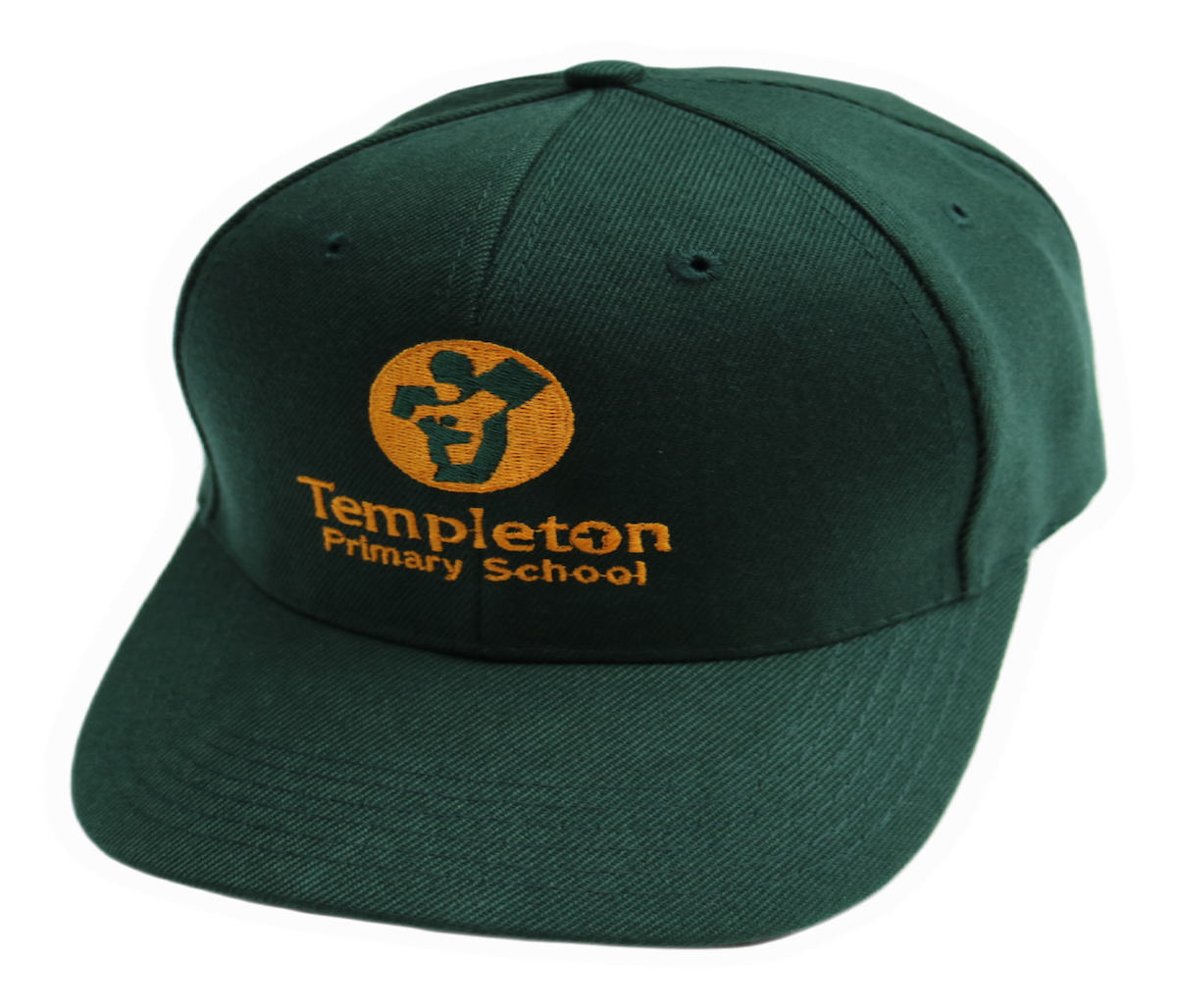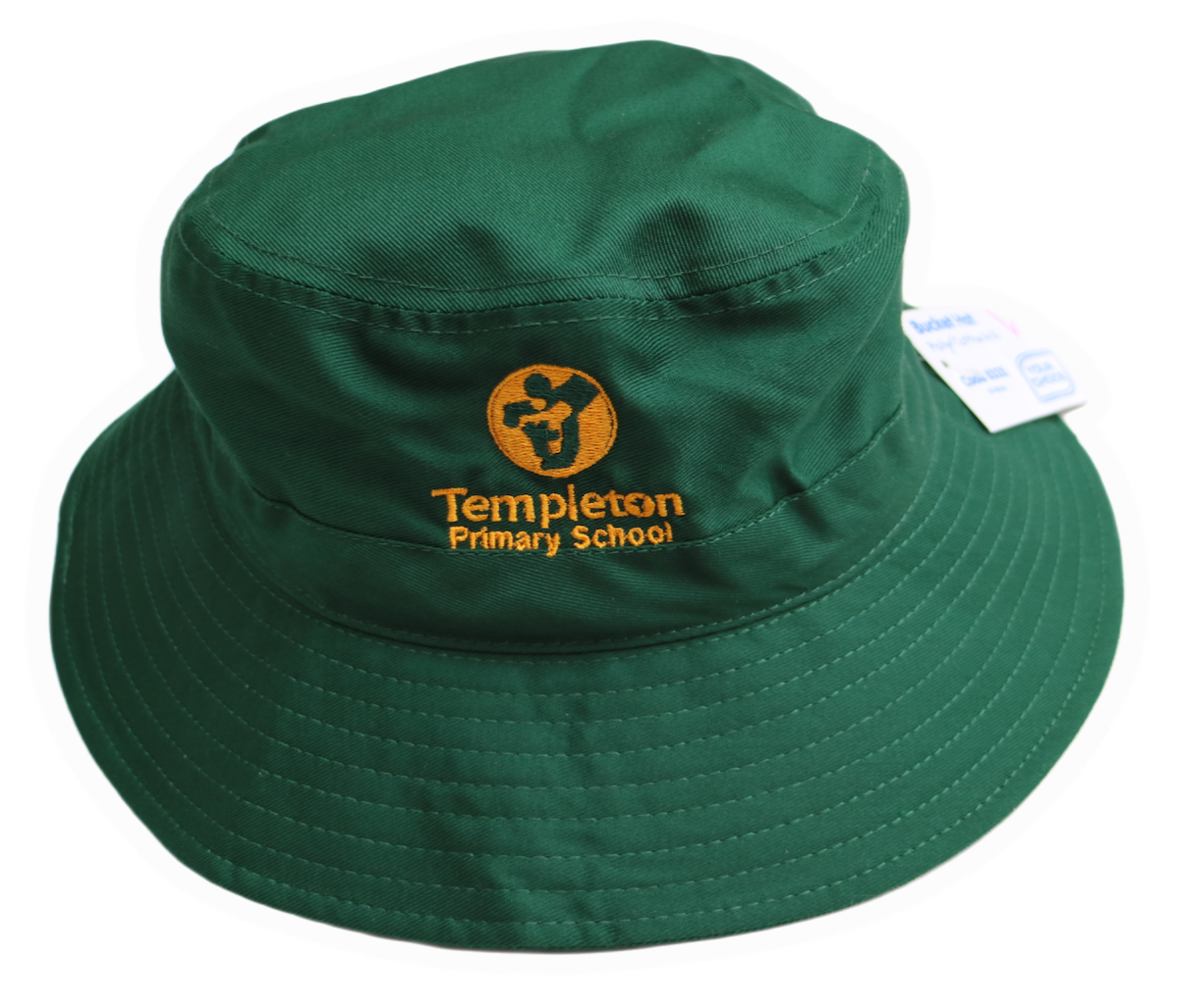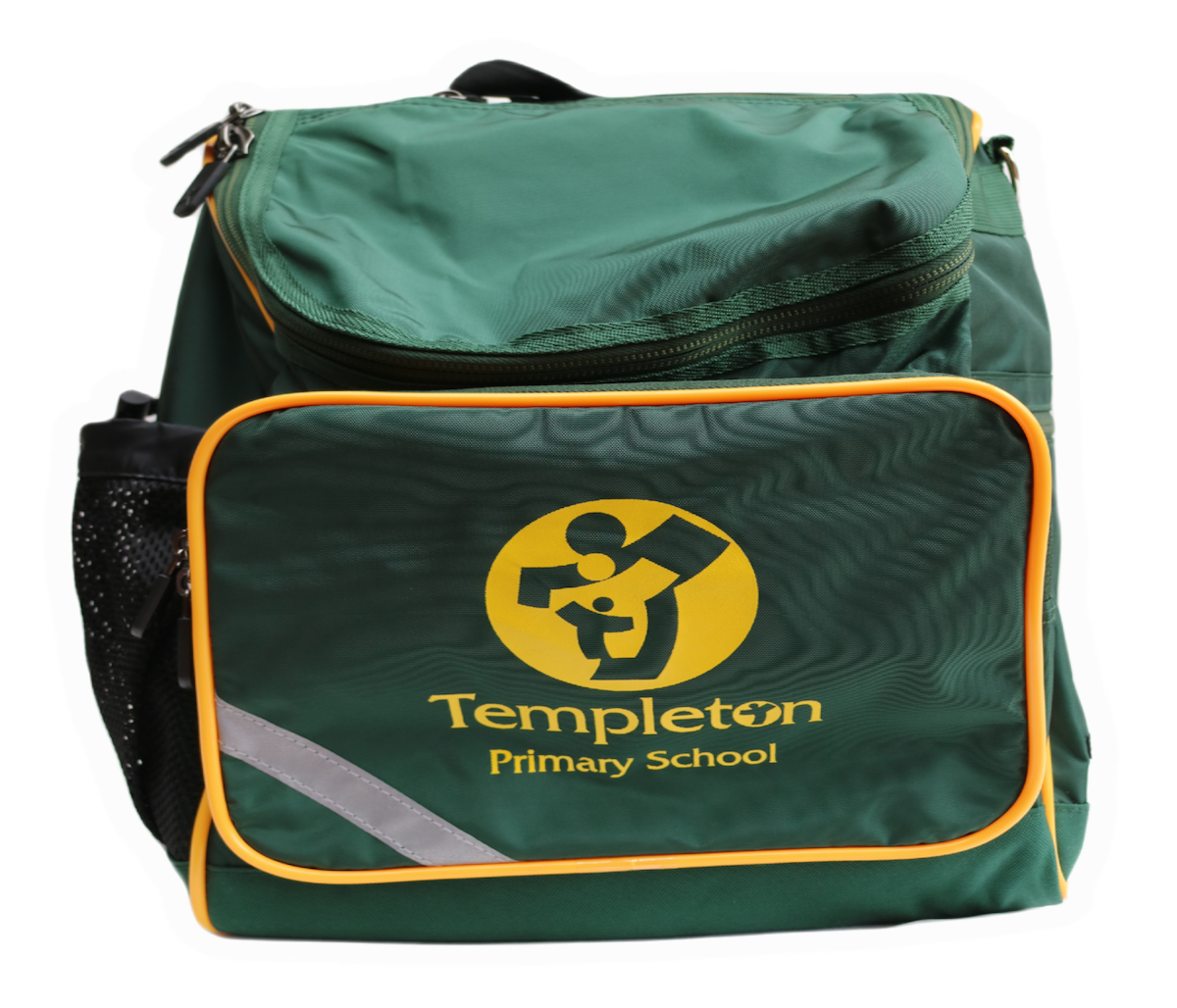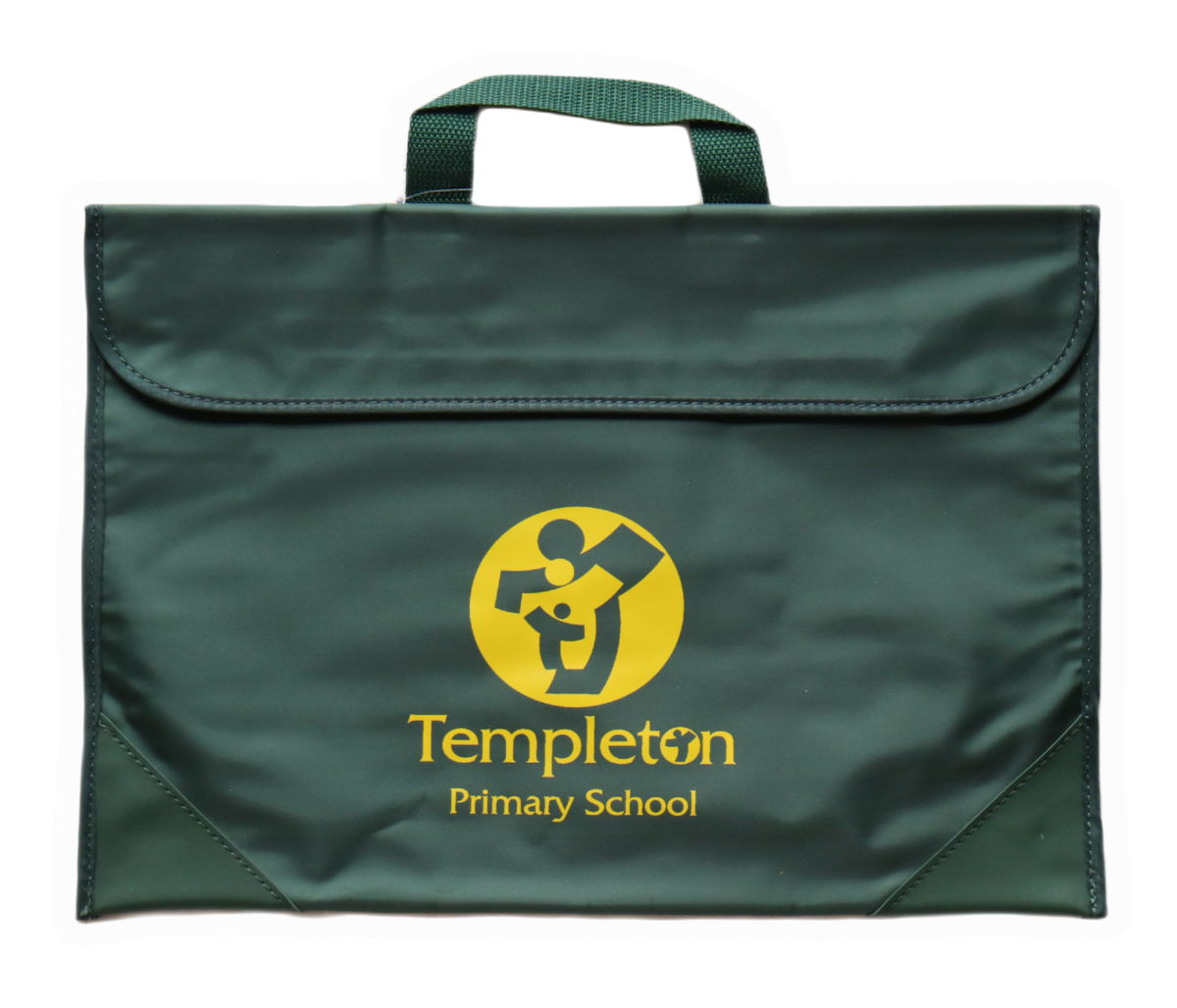Ready, set, go!
Our award winning transition program.
The Award Winning Transition Program at Templeton Primary School has been established over 30 years. Our program is continually evolving, keeping abreast with current practices in early childhood education.
The Transition program, for children moving from Preschool/Childcare to Primary School, is created and designed to include a range of activities that support children and families to become familiar and comfortable with the new environment, the teachers and experiences of school. Our aim is to provide your child with the support needed to ensure a confident beginning and seamless transition into Primary School.
Templeton’s program, known as “Ready, Set, Go!”, includes 6 sessions for children enrolled for the coming year, to visit the school and participate in a variety of activities.
Experiences include play based activities in the Prep Centre, Perceptual Motor Program, visits to the Library and Performing Arts room and outdoor play.
Our Program also includes five information sessions for parents. These sessions provide information about your child’s transition to school and programs offered at Templeton, while giving you the opportunity to meet other parents and have questions answered.
The children who take part in our Transition Program, become more confident and excited about starting school. Our aim is to provide the support your child needs to achieve his or her full potential.
This year’s schedule below:
Bells and music
Knowing where to be.
Every week at Templeton is an exciting one! We always have excursions, incursions and sporting events running, as well as lunchtime activities, rehearsals and training. However, our learning in Literacy and Numeracy remains our number one priority. Our daily structure ensures we have five Literacy and five Numeracy sessions every week, with an additional Literacy session in Library. Each Specialist area has a forty-five minute session every week, and our students have a thirty minute recess and one hour lunch every day. Assembly is run by the Assistant Principals on Mondays and School Captains on Fridays at 9:00am on the basketball court.
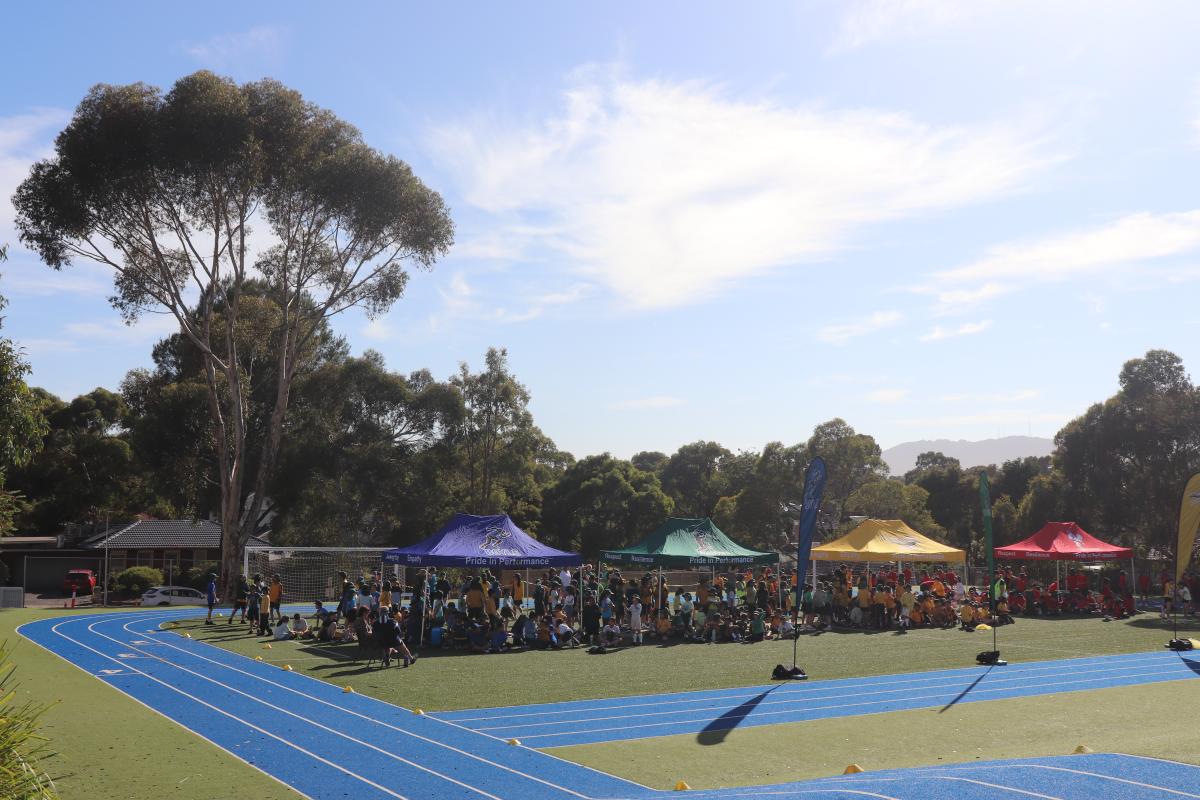
Child Safe Standards
The safest environment for your child.
The Child Safe Standards set out minimum requirements and outline the actions organisations must take to keep children and young people safe. They provide clarity for organisations and are consistent with standards in the rest of Australia. Introduced in 2016, the standards are continually evolving to reflect best practice. To have input into developing and refining our Child Safe Standards, we encourage parents to submit any suggestions in writing to the Principal for consideration. Click on the boxes below to view our work in keeping our students safe:
NEW - Culturally Safe Environments
Description
Establish a culturally safe environment in which the diverse and unique identities and experiences of Aboriginal children and young people are respected and valued.
Overview
This is a new standard that requires schools to make sure Aboriginal children and young people feel safe.
This guidance applies to all schools, even if there are no students who have identified themselves as Aboriginal.
The term ‘Aboriginal’ includes Aboriginal and Torres Strait Islander peoples. It is important to be respectful of how individual children, students, their families and community refer to themselves, and use appropriate language.
Cultural safety includes being provided with a safe, nurturing and positive environment where Aboriginal children:
- feel comfortable being themselves
- feel comfortable expressing their culture, including their spiritual and belief systems
- are supported by carers who respect their Aboriginality and encourage their sense of self and identity.
Benefits of cultural safety
Being able to express their culture makes Aboriginal children stronger and safer. Aboriginal children and young people who don’t feel safe being themselves and expressing their individuality may be less willing to report abuse.
Providing safe environments for children has positive, lifelong impacts that cannot be underestimated, and cultural safety is a key dimension of safety for Aboriginal children.
Key elements of cultural safety
Understand identity
Identifying as Aboriginal is one part of a child or young person’s identity. Like everyone, Aboriginal people have different life experiences and characteristics. Schools must recognise that each person is unique with their own characteristics, strengths and challenges.
Respect culture
Culture and identity are linked. By supporting Aboriginal children to feel strong in their identity schools also help them enjoy their cultural rights.
Australia’s colonial history has caused significant trauma and hurt that individuals, families and communities still feel today. However, Aboriginal communities have a long history of resilience and growth in the face of adversity and trauma. Schools should show respect for the deep resilience of Victorian Aboriginal communities.
Eliminate racism and abuse
Making your school culturally safe means taking the specific action needed to keep Aboriginal children and young people safe from abuse and harm.
Schools need to address all forms of racism and consider attitudes and practices that are a barrier to providing a culturally safe environment and to address all forms of racism.
Core Values and Principles of Child Safety
Templeton Primary School utilises the Code of Conduct, Community Conduct Policy and Templeton Values as the basis of shared expectations within the school community.
We have a responsibility to provide an educational environment that ensures that all students are valued and cared for, feel they are part of the school, and can engage effectively in their learning and experience success.
The school’s Values Program outlines shared beliefs in our community to develop a safe, productive and happy school. Templeton Primary is a school that is marked by respect, co-operation, commitment, achievement and care.
School Action
- equip staff, students, volunteers and the school community to acknowledge and appreciate the strengths of Aboriginal culture and understand its importance to the wellbeing and safety of Aboriginal children and students
- adopt measures to ensure racism is identified, confronted and not tolerated
- address any instances of racism within the school environment with appropriate consequences
- actively support participation and inclusion in the school by Aboriginal children, students and their families
- ensure school policies, procedures, systems and processes together create a culturally safe and inclusive environment and meet the needs of Aboriginal children, students and their families
- develop and endorse a policy or statement detailing the strategies and actions the school will take.
1 - Leadership, governance and culture
Description
Ensure that child safety and wellbeing are embedded in school leadership, governance and culture.
Overview
This standard emphasises the vital role that school leaders and governing authorities have in establishing:
- a culture where child abuse and harm is not tolerated
- effective systems and processes to implement child safe policies and practices and manage child abuse risks.
Schools must take deliberate steps to promote child safety and wellbeing and protect children by
- embedding and promoting a child safety culture at all levels of the organisation
- school leaders actively modelling such a culture
- ensuring transparent governance arrangements.
Benefits of child safety in leadership, governance and culture
The Betrayal of Trust and the Royal Commission into Institutional Responses to Child examined systemic failures to protect children. Many failures were the result of poor leadership, governance and culture, including:
- leaders who failed to act or were complicit in covering up child safety complaints
- governance structures that did not have adequate oversight or review mechanisms, and
- cultures that put adult offenders or organisational reputation above children’s safety.
A culture of child safety is driven by school leaders and supported by effective systems and processes.
School Action
- develop, endorse and make publicly available a:
- Child Safety and Wellbeing Policy
- Child Safety Code of Conduct
- develop, record, and implement risk management actions to make sure children are safe in the school environment
- monitor, annually review and evaluate child safety and wellbeing risks
- develop a policy or statement detailing the school’s processes to meet Public Record Office Victoria Recordkeeping Standards (PDF,
- ensure records relevant to child safety and wellbeing are created, maintained and disposed of by Public Record Office Victoria Recordkeeping Standards
- make sure school staff and volunteers understand their obligations in information sharing and recordkeeping.
2 - Participation and empowerment
Description
Children and young people are empowered about their rights, participate in decisions affecting them and are taken seriously.
Overview
This standard supports schools to create a culture that values and promotes student participation. This includes:
- informing students about their rights and responsibilities in an age-appropriate way
- recognising the importance of friendships and peer support
- enabling students to actively participate in creating a culture that is safe for them and their peers.
Benefits of empowering students
Empowering children and young people improves child safety. Policies and practices that are shaped by children’s and young people’s views can better prevent the risk of harm. Children and young people are more likely to speak up when they feel respected and confident that they will be heard.
Supporting friends and peers
Children and young people benefit from strong friendships. They often see their friends as their main source of support, information and advice, and will go to them for help.
Supporting students to raise concerns about the safety or wellbeing of their friends to encourage students to support their peers.
School Action
- inform students about all their rights, including their rights to safety, information and participation
- recognise the importance of friendships and encourage support from peers, to help students feel safe and be less isolated
- make sure staff and volunteers:
- are attuned to signs of
- facilitate child-friendly ways for students to express their views, participate in decision-making and raise their concerns
- to develop a culture that encourages participation and responds to what students say
- give students opportunities to participate, and respond to their contributions to strengthen confidence and engagement
- offer students access to sexual abuse prevention programs and related information in an age-appropriate way. School boarding premises are required to offer sexual abuse prevention programs and related information where it is relevant to the setting or context
- develop curriculum planning documents or other documentation that details how the school will address these requirements.
3 - Family and community involvement
Description
Families and communities are informed and involved in promoting child safety and wellbeing.
Overview
This standard highlights the importance of an open and transparent child safe culture for families and communities.
Schools must provide families and communities with accessible information about their child safe policies and practices and involve them in their approach to child safety and wellbeing.
Benefits of keeping families and communities informed
Involving families and communities in decisions relating to their children’s safety and wellbeing:
- recognises the important role they play in monitoring children’s safety and wellbeing and helping children to disclose concerns
- creates an open and transparent culture
- promotes a greater understanding of child safety
- encourages them to raise concerns or ideas for improvement.
Providing accessible and inclusive child safe information encourages families to engage in child safety and wellbeing discussions.
School Action
- make sure families participate in child safety and wellbeing decisions which affect their child
- engage and openly communicate with families and the school community about its child safe approach
- make child safety information accessible
- involve families and the school community in developing and reviewing child safety and wellbeing policies and practices
- inform families and carers about the school’s governance and approach to child safety and wellbeing, including roles and responsibilities of school staff.
4 - Equity and diverse needs
Description
Equity is upheld and diverse needs are respected in policy and practice.
Overview
This standard focuses on creating environments where all children and young people feel welcome.
Equity is a state of fairness in which all children and young people can participate freely and equally in areas of life, regardless of their background, characteristics or beliefs. This means their safety is not dependent on their socio-economic, family or personal circumstances.
As part of this standard, schools must:
- recognise and respond to students’ diverse circumstances
- understand that some students are at higher risk of harm than others
- provide easy access to information
- adjust procedures to respond to different needs
- make sure complaints processes are child-friendly, culturally safe and easy to understand.
Benefits of respecting equity and diverse needs
Children and young people have unique abilities, skills and life experiences. Differences in backgrounds, personality and beliefs shape a child’s experiences and needs. Their individual identity and sense of self can be fundamental to their wellbeing.
Children have better opportunities to fulfil their potential when diversity is valued. Negative experiences like exclusion and discrimination can be harmful. They increase the risk of harm and abuse to a child and decrease the likelihood of them telling someone and receiving an effective response.
Upholding equity and respecting diverse needs are relevant in implementing all the Child Safe Standards.
School Action
- develop and endorse a policy statement or curriculum document that details the strategies and actions it will take to uphold diversity and equity, that:
- makes sure school staff and volunteers understand the diverse circumstances of students, provides support, and responds to vulnerable students
- gives students, staff, volunteers and the school community access to information, support and complaints processes in ways that are culturally safe, accessible and easy to understand
- pays particular attention to the needs of:
- students with disability
- students from culturally and linguistically diverse backgrounds
- students who are unable to live at home
- international students
- lesbian, gay, bisexual, trans and gender diverse, intersex and queer (LGBTIQ+) students
- Aboriginal students and provides and promotes a culturally safe environment for them.
5 - Human resources management
Description
People working with children and young people are suitable and supported to reflect child safety and wellbeing values in practice.
Overview
This standard focuses on ensuring that people who work with children and young people are suitable and supported to act in a child safe way. Schools should make child safety and wellbeing a key consideration when recruiting staff and volunteers.
As part of this standard, schools must:
- develop robust procedures to ensure only suitable people work with children
- supervise staff and volunteers to ensure they prioritise the safety of children
- support staff and volunteers to understand their responsibilities.
Benefits of recruiting suitable staff and volunteers
Selecting suitable people to work with children is vital to protecting children from harm.
Good recruitment practices:
- create a safer workplace
- reduce the opportunity for harm to occur
- prevent, screen out or deter people who are unsuitable to work or volunteer with children
- recruit staff who uphold the school
Rigorous selection processes and appropriate training and supervision helps keep staff and students safe. This standard helps schools meet child safety and occupational health and safety legal requirements.
School Action
- make sure job advertisements have clear statements about:
- the job’s requirements, duties and responsibilities regarding child safety and wellbeing
- the job occupant’s essential or relevant qualifications, experience and attributes in relation to child safety and wellbeing.
- advise job applicants about the child safety practices of the school, including the Code of Conduct
- make volunteers aware of the school’s Child Safety and Wellbeing Policy and Child Safety Code of Conduct
- screen school staff applicants:
- sight, verify and record a Working with Children clearance if they person is required to have one or any equivalent background checks such as Victorian Institute of Teaching registration
- collect and record proof of identify, qualifications, history of working with children and references
- screen volunteers:
- sight, verify and record a Working with Children clearance if they person is required to have one of any equivalent background check
- consider the child safety risks relevant to the volunteer’s role and, if reasonable and appropriate collect and record proof of identify, qualifications, history of working with children and references
- provide an induction to staff, volunteers and contractors engaged in child-related work, regarding child safety and wellbeing that is appropriate to the nature of the role
- ensure that induction addresses the school’s:
- the Child Safety Code of Conduct
- the Child Safety and Wellbeing Policy
- procedures for managing complaints and concerns related to child abuse
- make sure staff, governing body members, and volunteers engaged in child-connected work, are aware of their responsibilities for:
- children and students
- information sharing and reporting obligations
- recordkeeping obligations
- provide supervision and people management of staff and volunteers that focuses on child safety and wellbeing.
6 - Child-focused complaints process
Description
Ensure that processes for complaints and concerns are child focused.
Overview
This standard focuses on ensuring that schools have complaints processes that are child-focused, culturally safe and accessible to everyone.
Schools must have policies, procedures and practices to
- have a complaints handling process focused on students and their safety needs
- take complaints and concerns seriously
- respond promptly and thoroughly
- identify and respond to all forms of child abuse
- report child abuse to relevant authorities, whether there is a legal obligation to report it.
Benefits of child-focused complaints processes
Making a complaint can be challenging. Complaints are more likely to be raised when there are clear, well-communicated policies and procedures for concerns or allegations.
Complaints handling processes need to focus on students and their safety needs. The process should be able to handle all kinds of complaints and concerns. A complaint might reveal a bigger issue or prevent a situation from escalating.
Empowering students to raise low‑level concerns improves the likelihood that they will feel comfortable making a disclosure or reporting abuse.
Staff, volunteers and families can report concerns more easily if the school has procedures that are child-friendly and accessible to students and the school community.
School Action
- complaints handling policy which
- is publicly available and accessible
- child-focused
- culturally safe and easily understood by the school community
- has information about the process for making a complaint about the school or any person within the school
- requires that complaints are taken seriously and responded to promptly and thoroughly.
- procedures for responding to complaints or concerns relating to child abuse that is:
- publicly available and accessible
- child-focused
- culturally safe and easily understood by the school community
- ensures complaints are taken seriously and responded to promptly and thoroughly
- covers all forms of child abuse
- sensitive to the characteristics of the school community
- able to address reporting of complaints and concerns to relevant authorities, whether or not the law requires reporting, and cooperate with law enforcement
- able to provide details of recordkeeping, reporting, privacy and employment law obligations to be met when responding to complaints and concerns
7 - Staff education and training
Description
Staff and volunteers are equipped with the knowledge, skills and awareness to keep children and young people safe through ongoing education and training.
Overview
This standard focuses on building child safety knowledge, skills and awareness in staff, volunteers and school governing authorities.
All schools should deliver training to new and existing staff and volunteers. The training must be tailored to the needs of the school and the role the person performs at the school.
Benefits of child safety knowledge, skills and awareness
By delivering tailored training to all staff and volunteers, everyone will share an understanding of:
- what child safety means
- the importance of child safety
- what to look for, and
- what to do.
This provides staff and volunteers with the knowledge and skills they need to create a schoolwide culture of child safety.
Appropriate training and supervision helps keep staff and students safe and helps schools meet their child safety and occupational health and safety legal requirements.
Standard 6 provides more information about child safe recruitment and support for staff and volunteers.
School Action
- provide child safety training to staff engaged in child-connected work every year. This training should include:
- the Child Safety and Wellbeing Policy and the Child Safety Code of Conduct
- the procedures for responding to complaints and concerns about child abuse
- guidance on recognising indicators of child harm, including harm caused by other children and students
- guidance on responding effectively to issues of child safety and wellbeing and supporting colleagues who disclose harm
- guidance on how to build culturally safe environments for children and students
- guidance on their information sharing and recordkeeping obligations
- guidance on how to identify and mitigate child safety and wellbeing risks in the school environment without compromising a child or student’s right to privacy, access to information, social connections and learning opportunities.
- Provide training and information to volunteers engaged in child-connected work that is appropriate to their role that will equip them with the knowledge, skills and awareness to keep children safe.
- Support staff and volunteers to implement the Child Safety and Wellbeing Policy and the Child Safety Code of Conduct where these policies apply to their role and responsibilities.
- Provide appropriate training and guidance to the members of the governing body every year. This training should include:
- individual and collective obligations and responsibilities for implementing the Child Safe Standards and managing the risk of child abuse
- child safety and wellbeing risks in the school
- the child safety policies, procedures and practices of the school.
8 - Physical and online environment
Description
Physical and online environments promote safety and wellbeing while minimising the opportunity for children and young people to be harmed.
Overview
This standard focuses on child safety and wellbeing in physical and online environments and ensuring that procurement also reflects child safety.
Schools need to have policies and strategies:
- for identifying and responding to risk and reducing or removing the risk of harm
- for online conduct and online safety
- ensuring that procurement policies for facilities and services ensure the safety of children and students
Schools must analyse and understand potential risks to students. It is important to think about risks created by school structure and culture, activities and physical and online environments.
Online technologies are constantly changing which presents significant challenges for schools, parents and carers. Online behaviour needs to be addressed in the Child Safety and Wellbeing Policy and Codes of Conduct to promote child safety.
Arrangements with external agencies also create child safety risks. They create opportunities for unknown people to have contact with students.
Benefits of child safety knowledge, skills and awareness
By actively considering risks, schools can act preventatively to reduce the chances of risks happening. A thorough risk analysis is the first thing schools should do to promote child safety. It provides the foundation to inform all other child safety work, including policies, procedures and practices.
Schools will be in the best position to know where risks are located and how plans can be put in place to prevent or reduce them. Effective risk analysis will consider all of the child safe standards and risks in physical and online environments and procurement.
School Action
- make sure child safety and wellbeing policies, procedures and practices enable school staff and volunteers to identify and mitigate risks without compromising a student’s right to privacy, access to information, social connections and learning opportunities.
- develop and endorse a policy or statement on online conduct and online safety.
- develop procurement policies for facilities and services from third parties that ensure the safety of students.
9 - Review and continues improvement
Description
Implementation of the Child Safe Standards is regularly reviewed and improved.
Overview
This standard focuses on continuous improvement in child-safe policies, procedures and practices.
Schools must:
- regularly review and evaluate policies and strategies
- analyse child safety incident data
- share review findings with the school community.
Benefits of child safety knowledge, skills and awareness
Being a child-safe organisation requires ongoing effort.
Child safe organisations have an open and transparent culture, learn from their mistakes, and put the interests of children first. Taking time to review policies, procedures and practices put child safety and wellbeing at the centre of the school’s activities.
Regular reviews of policies, procedures and practices:
- makes sure they are adequate, up-to-date and effective, fully implemented and followed by everyone
- helps schools maintain the best approach to child safety and wellbeing and minimise the risk of harm.
School Action
- review and evaluate child safety and wellbeing policies, procedures and practices after any significant child safety incident, or at least every 2 years and improve where applicable
- analyse complaints, concerns and safety incidents to identify causes and systemic failures and to inform continuous improvement
- report on the outcomes of relevant reviews to staff, volunteers, the community, families and students.
10 - Child Safety policy and procedures
Description
Policies and procedures that document how schools are safe for children, young people and students.
Overview
This standard focuses on incorporating the 11 Child Safe Standards into school policies, procedures and practices, which work together to create a child-safe culture.
Schools should ensure these policies and procedures are:
- informed by community consultations so they are relevant to the school
- accessible to all
- informed by best practice
- championed by leaders
- well understood by those they apply to
- implemented effectively.
Benefits of child safety knowledge, skills and awareness
Being a child-safe organisation requires ongoing effort.
Schools are safer for children and students when child safety policies and procedures are championed by leaders and understood by all members of the school community.
School Action
- implement practices for a child-safe environment
- establish policies and procedures that meet all the Child Safe Standards
- make sure all relevant school staff, governing body and volunteers understand and implement the policies and procedures
- champion and model the policies and procedures for a child-safe environment
- document policies and procedures and make them easy to understand
- make sure policies and procedures are informed by best practice models and stakeholder consultation


School Uniform
Decked out in the famous green and gold.
Polos & Fleece
Dresses, Skirts & Tights
Pants & Shorts
Year 5/6
Rain Jackets
Hats & Beanies
Compulsory Items
Accessories
Policy


Templeton Primary School has partnered with Subway Wantirna to deliver lunches every Friday. Parents can save and print the lunch order form, or fill one out at the office. Lunch orders are $8 each, and accepted until 2:00 pm on Wednesdays.
Order Form

Camp Australia – Guiding Children’s Growth
We are proud to partner with Camp Australia to provide our
Outside School Hours Care (OSHC) program.
Camp Australia programs are centred on child
enrichment, while ensuring a reliable, engaging and hassle-free OSHC service at our school. Their
engaged educators foster a safe, inclusive environment where children can relax, have fun and grow.
Camp Australia recognises that children need a different experience in term time to the
experience they have on their holidays. Families can choose Your OSHC for before and after
school experiences during term, or Rocketeers during the holidays.

Your OSHC – OSHC that inspires
At Your OSHC by Camp Australia, every before school, after school and pupil
free day program is tailored to the likes and interests of each child in service. Camp Australia’s
educators design enriching experiences to inspire your children’s confidence, independence and
imagination. In any one week, they could be participating in science experiments, active play,
creative expression and more - they believe in learning through experience so that each child can
grow.

Rocketeers – Extraordinary Holiday Adventures
Rocketeers by Camp Australia is a space for children to
escape the ordinary and experience the extraordinary during their school holidays. Every school
holiday break is a new mission for children to embark upon. With carefully designed programs,
directed by the children and informed by family feedback, no two days are the same with
Rocketeers. Experiences planned could include games, arts & crafts, sport, excursions,
cooking, coding and more.
The Next Step
Year 7 Transition.
The transition to Year 7 begins in Grade 5 at Templeton. Parents are encouraged to visit the local schools throughout Grade 5 to reach an informed decision regarding the appropriate secondary school for your child.
Our Grade 5 students attend transition sessions at Wantirna Secondary College in Semester 2, experiencing a secondary school environment for the first time.
The department transition timeline begins in Term 1 of Grade 6. Throughout the year, our Grade 6 Team actively prepares the students for secondary school, through increased independence, use of diary, musical, excursions and camp.
The Grade 6 Team conducts a Transition Information Night to assist parents with the process, and parents are encouraged to contact their classroom teacher if you have any concerns or questions.
State Secondary Schools
If your child is in Grade 6 in 2025 and attends a Victorian government primary school, you will need to:
- Refer to the Year 6 to 7 Placement Information Pack for Parents and Carers, which will be provided by your child’s primary school from Tuesday 22 April 2025.
- The pack includes the Year 7 application form. If you have not received the pack, you can access a copy online at the links below
- Use Find my School to locate your local secondary school or preferred government school, and read about School zones and Enrolling in school.
- Complete the application form and return it to your child’s primary school by Friday 9 May 2025.
Year 7 placement is decided by secondary schools using the Department of Education’s Placement Policy. However, all communication about your child’s placement must be with the Year 6 Coordinator or Transition Coordinator at your child’s primary school until the placement is confirmed.
You will receive notification of your child’s Year 7 placement offer on Tuesday 1 July 2025.
All government secondary schools will host a Year 7 Orientation Day (for Year 6 students) on Tuesday 9 December 2025.
State Secondary School Links
![20240912 111601[1] Copy](https://templetonps.vic.edu.au/wp-content/uploads/2025/07/20240912_1116011-Copy.jpg)
![20240912 162527[1] Copy](https://templetonps.vic.edu.au/wp-content/uploads/2025/07/20240912_1625271-Copy.jpg)
Catholic and Independent Schools
If your child is enrolling in a non-government secondary school, contact the secondary school directly to find out about their enrolment process.
Visit Catholic Education Commission of Victoria and Independent Schools Victoria to find Catholic and independent schools.
For home schooling, find out about the requirements and how to register your child for home schooling.
Catholic and Independent School Links









